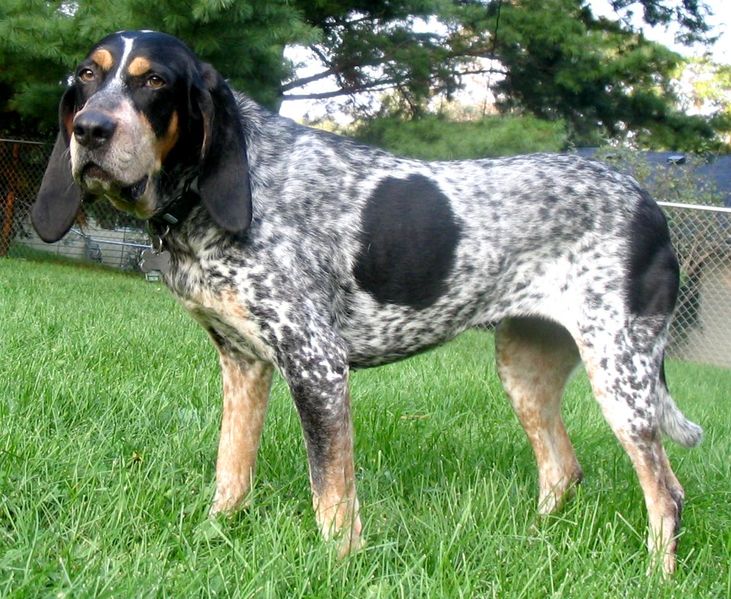Bluetick Coonhound Official state dog of Tennessee Photo by Mark Riordan. (public domain image).
Official State Dog of Tennessee
Bluetick Coonhound dog breed has been officially announced as the state dog of Tennessee in 2019. Well, Tennessee people have always had a special place in their hearts for Bluetick Coonhound.
Smokey, a Bluetick Coonhound has been the mascot of the University of Tennessee since 1953. So, it’s no surprise for Tennessee vols. that their favorite hound is now an official state dog.
Governor Bill Lee signed and approved the Bluetick Coonhound as the state dog. Smokey X, the current live mascot of the University of Tennessee, and his predecessors are the sweetest dogs and no one could vote against the bill. The bill was then passed unanimously in the House and Senate.
Bill Beck, Nashville Representative, and Art Swann, Maryville Senator introduced this bill in February 2019, and then it was signed into law by Governor Bill Lee on 20 March. Currently, 13 States, including Tennessee, have designated state dogs.
A little bit about Bluetick Coonhound
Having a sweet and charming personality, Bluetick Coonhounds are hunters. They single-mindedly chase the game with the utmost relentless and boldness. That said, their surprising prey-drive hidden behind their adorable look should be channelized.
As Corey Patrick, Founder & CEO at DogNeedsBest says “A Bluetick Coonhound seems to be a pet that everyone can have. But their high prey drive and exercise needs do not make them perfect family or apartment pets. They need open space to thrive.”
They are agile and move quickly as nocturnal hunters. They got their name for their black-and-blue colored and mottled glossy coat. The females are usually smaller than their male counterparts, weighing around 45 to 65 pounds. Whereas the males can be as large as 27 inches and be 80 pounds.
As a coon hunter, the hound’s baying, bawling, and chopping may sound intriguing to some. However, those typical barks mean different things. All in all, these slender and never clumsy dogs with floppy ears love to get affection from their owners. They stay devoted to those who give the affection they need.
But if somehow their prey-drive is neglected, they will have behavior problems and may bark incessantly.
History of Bluetick Coonhound
Hound dogs were bred to be hunters and to pursue quarry. They are chiefly classified into two categories: Sighthounds and Scenthounds. Sighthounds use their vision and speed to spot and chase the quarry whereas scenthounds can smell and identify the trails to the game over a long distance. Bluetick Coonhound is a scenthound.
All Coonhound breeds were developed in the USA, that said, Bluetick Coonhounds too first came into existence in America. Their linage interpolates to the time when the USA wasn’t found.
Raccoon hunting has been as old as America as they say. According to Diane Cooper, Writer & Cat Trainer at CatLovesBest, “Raccoons were considered to be vermins. They would indulge in the fights with pets, spread diseases, and even steal their food from your house.”
However, that doesn’t mean at all that raccoon hunting should still be continued. There was an overpopulation of them and it was a strong need for hunting back then. The Coonhounds would help humans find them out by either spotting them or following their trails.
The first American president George Washington received French Staghounds from his friend Marquis de Lafayette. The dogs then were bred with English Foxhounds and other hound dogs to have a hound with a ‘cold nose.’ The term is used for a raccoon hound who has a great sense of smell and can work its way to trails that are hours or even days old.
As the name suggests, these dogs were used to hunt wily raccoons. Nevertheless, they were also used to hunt big quarries like bears and boars. And you know what’s surprising about their prey-drive? They can run as much as 30 hours at a stretch till they find the game. The lust for quarry is what makes them endure animals.
Article by Clara Lou at PetLovesBest

